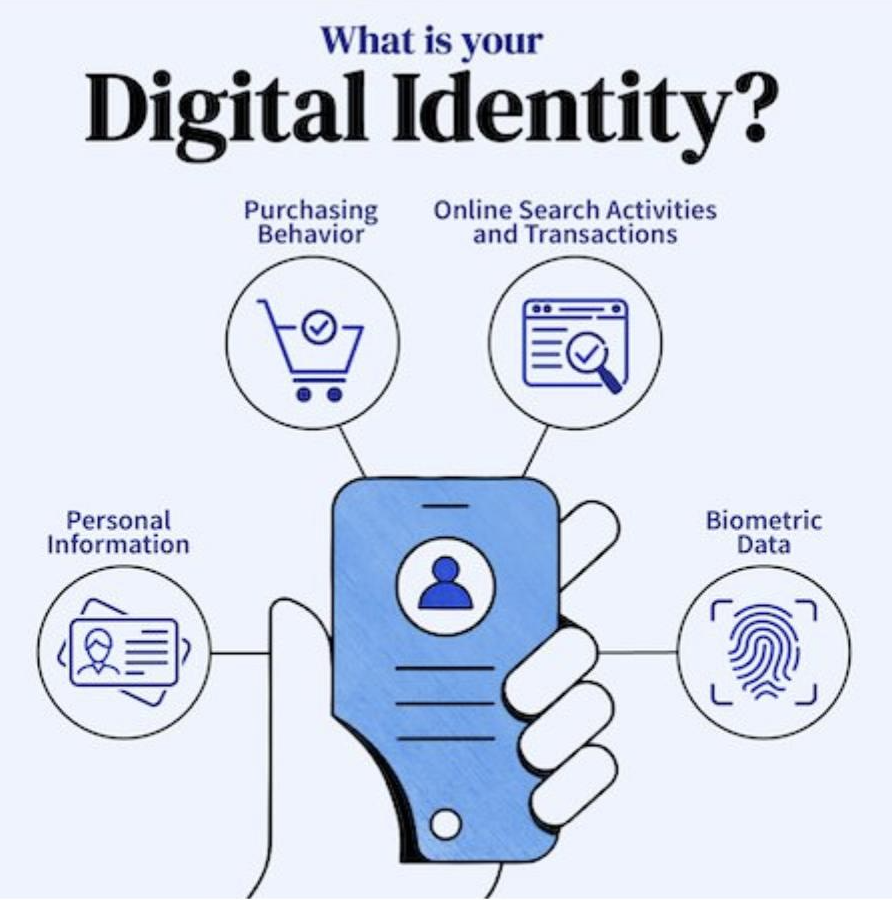You’ve likely heard the term “digital identity” before, repeatedly and perhaps in the context of high-level government talks about internet security. Yet you may have had to ask yourself, What is digital identity, exactly?
Your digital identity is how you prove you’re on the internet. There are many types of digital identity. Your overall digital identity is the aggregation of the personal data you’ve voluntarily uploaded to the internet through various digital portals.
Digital identity verification is automated, rather than given directly to another individual. By keeping a motivated third party out of the equation, misuse of your delicate information is less likely.
In this chapter, we’ll discuss what constitutes your digital identity, why your digital identity is important, how to avoid digital identity theft, how to strengthen your digital identity, and other issues of digital identity management. We’ll get digital identity explained to you as best we can.

What makes up your digital identity?
Your digital identity, to put it simply, is made up of both official documents and your patterns of digital activity. In other words, your digital identity is complex and can include Personally Identifiable Information (PII) too. Here are some digital identity examples.
Personal Information
Your digital identity accounts for personal information such as:
· Your usernames and passwords
· Your date of birth
· Your Social Security number
· Your medical and financial history
Many of these make up who you are in legal terms—everything from your birth certificate and occupation to your health status and resident classification.
Purchasing behavior
Not only are the things you purchase online, and the websites from which you purchase them, part of your digital identity; your method of payment is as well.
Common payment tools include:
· Credit cards
· Debit cards
· Cashier’s checks
· Wire transfers
These are sensitive pieces of information, to say the least.
Online search activities and transactions
Your search history is a major factor in your digital identity. By tracking what sort of websites you visit most frequently, machine learning can amass a dossier on your preferences and predict what you might want to see in the future.
This is sometimes called “targeted advertising,” an increasingly common, albeit somewhat controversial, digital marketing technique aimed at eliminating digital waste by only showing you what you (probably) want to see.
Biometric data
More and more devices use biometric data to unlock permissions and features. This can be quite convenient: Instead of having you remember a password or PIN, your phone—or laptop or tablet, etc.—needs only to perform a biometric scan to unlock all features.
Typical biometric scans include:
· Facial recognition
· Fingerprint mapping
· Retinal scans
This is high-level, irreplicable data that can greatly increase your internet security.
Why is a digital identity important?
Your digital identity is important for any number of reasons.
1. Access to portals or information. Businesses, services, and social media websites require users to sign into bespoke portals with personal information.
2. Democratized access. Most portals are simple to use, and they allow anyone with internet connectivity to attend to tasks that are otherwise complicated or onerous, such as paying bills, managing bank accounts, retrieving government information, etc.
3. Your protection. If purchases that don’t match up with your prior purchase patterns are made in your name, banks and security organizations can flag them as fraud.
4. Trust. Users are trusting websites and devices with sensitive, highly personal information. When this trust is broken, it leads to disaffiliation from the digital world, exacerbating anti-democratic issues.
Do I need a digital identity?
It isn’t really a matter of needing a digital identity, per se: Everyone who has ever used the internet has a digital identity, whether they know it or not.
And it’s better they know it and get involved in it: A weak or compromised digital identity can harm you, not just the digital you. They are, after all, one and the same.
For instance, if your passwords and usernames aren’t secure, hackers, posing as you, could make purchases using your financial information as stored in the cloud. And depending on the nature of these purchases—where they were made, with what type of payment method (debit, credit, etc.), for how much—you may be on the hook for the cost, or at least have to go through a tedious reconciliation process in the hope of seeing any of that money returned to your account.
It’s dangerous for your personal information to be compromised, as well. Cybercriminals can get your Social Security number, driver’s license, passport, and other pieces of information. The consequences of this can cause problems at the federal level.
How do I strengthen my digital identity?
So it’s a good idea to strengthen your digital identity. Here are some tips on how to build a strong digital identity.
· Create strong passwords. Make sure your passwords don’t consist of guessable personal information, such as your birthdate or an anniversary. Make them more or less as random and confounding as possible — but not so much that you can’t remember them. This helps you create a strong digital identity.
· Update verification modes regularly. The more information you give out, the more complex your digital identity becomes, making it harder for fraudsters to pose as you.
These tips are how to build your online reputation. And be sure to look out for red flags of any kind, and contact an IT professional when something doesn’t seem quite right.
Conclusion
Your digital identity is important. It is, after all, you—your personal information, what you do on the internet and, as machine learning grows ever more sophisticated, what you are likely to do on the internet in the future.
Make sure you protect your digital identity by complicating your various verification processes.
A great way to help protect your digital identity is with IDShield. Reach out to a LegalShield independent associate for more information about IDShield and how it can help.
IDShield is a product of Pre-Paid Legal Services, Inc. d/b/a LegalShield (“LegalShield”). LegalShield provides access to identity theft protection and restoration services. IDShield plans are available at individual or family rates. For complete terms, coverage, and conditions, please see an identity theft plan. This is meant to provide general information and is not intended to provide legal or tax advice, render an opinion, or provide any specific recommendations.
Pre-Paid Legal Services, Inc. (“PPLSI”) provides access to legal services offered by a network of provider law firms to PPLSI members through membership-based participation. Neither PPLSI nor its officers, employees or sales associates directly or indirectly provide legal services, representation, or advice. The information available in this blog is meant to provide general information and is not intended to provide legal advice, render an opinion, or provide any specific recommendations. The blog post is not a substitute for competent legal counsel from a licensed professional lawyer in the state or province where your legal issues exist and the reader is strongly encouraged to seek legal counsel for your specific legal matter. Information contained in the blog may be provided by authors who could be a third-party paid contributor. All information by authors are accepted in good faith, however, PPLSI makes no representation or warranty of any kind, express or implied, regarding the accuracy, adequacy, validity, reliability, availability, or completeness of such information.

